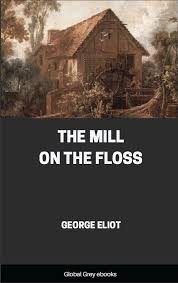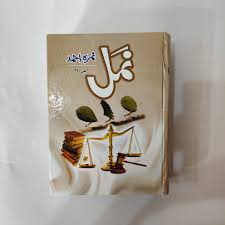Description
The Mill on the Floss is perhaps George Eliot’s finest novel, written under her pen name and published in 1860. This is a work deeply insightful into character, social norms, and the clash between what an individual may desire and what society dictates. Here are the basic themes and plot of the novel:
1. Plot Summary
The novel by George Eliot was published in the early 19th century as a story set in the fictional town of St. Ogg’s where siblings Maggie and Tom Tulliver grew up belonging to their father, at Dorlcote Mill. The Tulliver family in the novel face serious financial and personal crises.
Childhood of Maggie and Tom: The book begins with their childhood, depicting Maggie as passionate and sharp-minded in contrast to Tom, who is practical and somewhat rigid in character. Their father, Mr. Tulliver, gets a lawsuit scandalously reversed by a lawyer called Mr. Wakem, thereby bringing a financial blight on the family and a loss of the mill.
Struggles with Society and Family Expectations : While the family is in debt, and Tom is working day and night to pay off all the debts, Maggie’s strong will and yearning for mental and emotional fulfillment put her at odds with her family and society.
Maggie’s inner life and love relationships: Maggie gives her heart to Philip Wakem, the son of the lawyer who has impoverished them. Her love relationship with Philip was complicated enough, but with Tom Wakem’s grievance against Maggie’s family, coupled with the social resistance they face as lovers, their relationship becomes further complicated. Later, Maggie is drawn to another man, Stephen Guest, who is actually engaged to her cousin Lucy. That makes matters much more tense and scandalous for Maggie.
Climax and Conclusion: The novel leads to a tragic end as a devastating flood hits the town. Maggie tries to save Tom, and the two briefly reunite, but both drown in the flood, representing the unresolved tensions amongst their desires and the constraints imposed on them through society and family bonds.
2. Important Themes
The total conflict between passion and duty develops in the novel within the person of Maggie Tulliver, who is torn between deep emotional and intellectual needs and the expectations of duty, family, and social conventions. Most of the dramatic and tragic events of this novel are inward conflicts.
Restrictions on women: Maggie’s desire for independence describes the Victorian sense that heavily imposed restrictions by society upon women. Therefore, the rigidity of the gender roles is well-criticized through Maggie in this novel. Her intelligence and emotional depth are often suppressed by society.
Family Loyalty and Forgiveness: The novel centers Maggie and Tom as siblings, so much of the novel revolves around their thematic issues. These two siblings disagree most of the time throughout the novel, yet below the argument lies a deep bond between the two siblings. As personal and financial ruin takes on a catastrophic theme, loyalty, forgiveness, and reconciliation become key elements of the novel.
The Role of Fate and Tragedy: It is in the tragic floods at the end that the story to much extent furthers the idea of destiny, where the fate over the struggles of its characters becomes the highest tragedy. Maggie’s inability to reconcile personal aspirations with societal expectations ends in the inevitability of the conclusion of the novel.
3. Character Analysis
Maggie Tulliver is one of the most emotional, intelligent, and rebellious females from Eliot’s novels. Her internal struggle and passionate nature made her one of the more complex characters to write about for Eliot. Maggie Tulliver was a rebel against the basic Victorian expectations for her character but at a price she must ultimately pay dearly for such a decision.
Tom Tulliver Tom Tulliver – Maggie’s brother, practical, responsible, and strict. He feels a great sense of duty towards his family and is intent on restoring the Tulliver name at what, to himself, may prove a personal cost. His relationship with Maggie is tense and yet full of mutual love and loyalty.
Philip Wakem: A sensitive and intellectual character, Philip is the one Maggie loves dearly but with whom her marriage is prohibited because of his family’s aged feud with Maggie’s family. He did represent the ideal for Maggie’s intellectual and emotional fulfillment although socially this was impossible.
Stephen Guest: Handsome, rich, and charming is Stephen, who falls for Maggie when she is betrothed to his cousin Lucy. His tryst with Maggie raises certain moral questions that lend an important finishing touch to the climaxed novel.
4. Nature and Water Imagery of the Novel
The river and the mill are central symbols throughout the novel. A river is best personified as both life-giving and destructive in this sense because it runs so deep into the lives of the characters, yet it is ultimately the force that brings about the tragedy. Water imagery is often used to reflect the emotional and social currents that carry the characters toward their fates.
5. Importance and End
The novel is a deep study of the human condition, of societal constraints, and the adversity that growth in character faces. It depicts George Eliot’s (Mary Ann Evans’) deep psychological insight into creating complex, multidimensional characters. It remains one of the great works in Victorian literature, known for its tragic depth, emotional intensity, and scathing attack on society.













Reviews
There are no reviews yet.